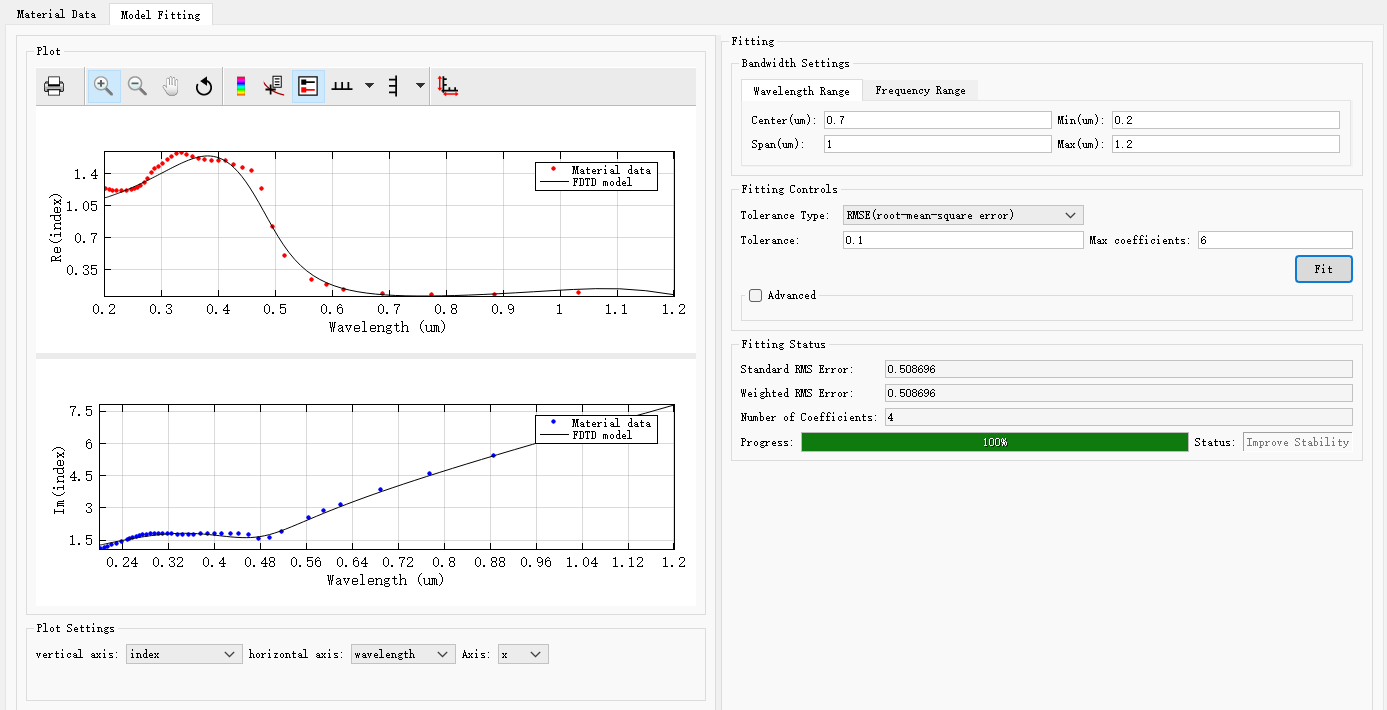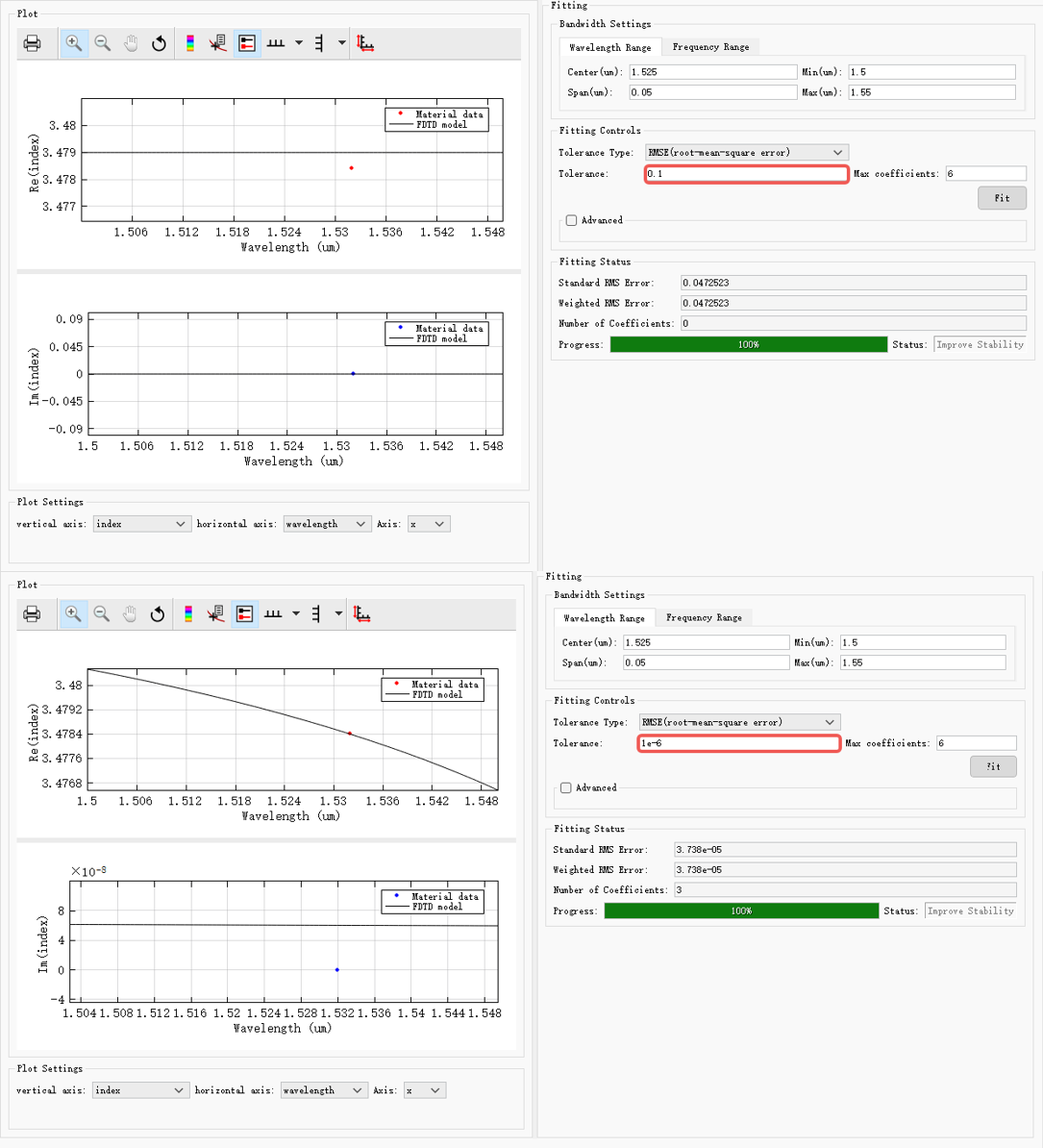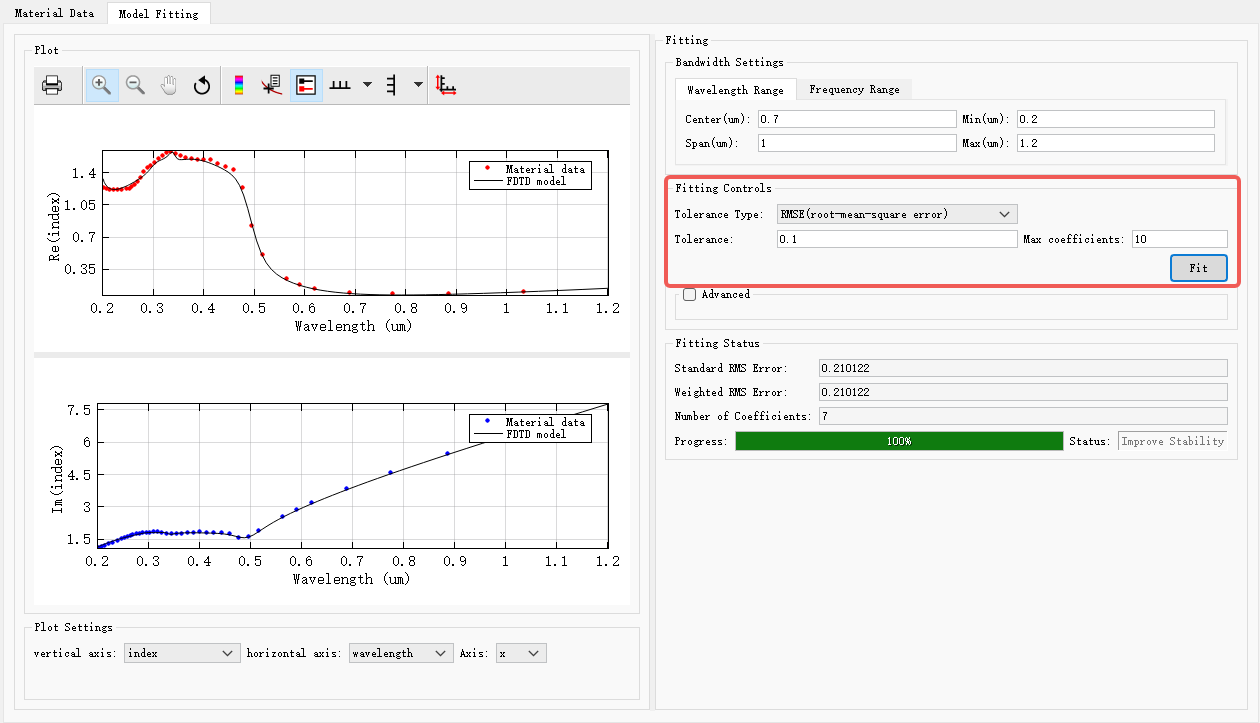Contact Number
Email
 Enterprise WeChat
Enterprise WeChat WeChat Service Account
WeChat Service Account
During the material fitting process, I find that the fitting curve has low agreement with the actual scattered data points, as shown in the figure below. Material models with large fitting errors may affect the accuracy and reliability of the final simulation results. How should I optimize the fitting effect by adjusting the fitting parameters to improve the precision of simulation calculations?

SimWorks uses a fitting algorithm to convert experimental sample data into stable material models for simulation. By default, the algorithm's parameters yield fitting results that meet most simulation needs. However, for some cases, users may need to adjust the parameters to achieve the desired results.
On the Model Fitting page, check the fitting result curve for the sampled material. If the fitting performance is unsatisfactory, you can adjust the fitting parameters.
1. Adjust the fitting tolerance. Tolerance is the maximum allowable error for material fitting. The fitting algorithm tries to find a model that brings the RMSE (Root Mean Square Error) / RRSE (Relative Root Mean Square Error) below this value, using the minimum number of coefficients. Reducing the tolerance can improve fitting accuracy, but may increase the number of coefficients and computation time.

2. Adjust the Max Coefficients. This parameter sets the maximum number of coefficients allowed in the fitting model. More coefficients enable fitting of more complex material curves, but will use more memory and simulation time. Too many coefficients may cause over-fitting (too sensitive to noise), while too few will result in significant errors. The default algorithm uses the minimum number of coefficients needed to achieve an RMSE/RRSE below the tolerance. If this cannot be achieved, it selects the model with the lowest possible RMSE/RRSE. Increasing Max Coefficients can improve the fitting result in such cases.

3. For further optimization, experienced users can try advanced settings (such as fitting algorithm type, imaginary part weighting, etc.). If you are not familiar with material fitting settings, it is recommended to contact SimWorks technical support for assistance.